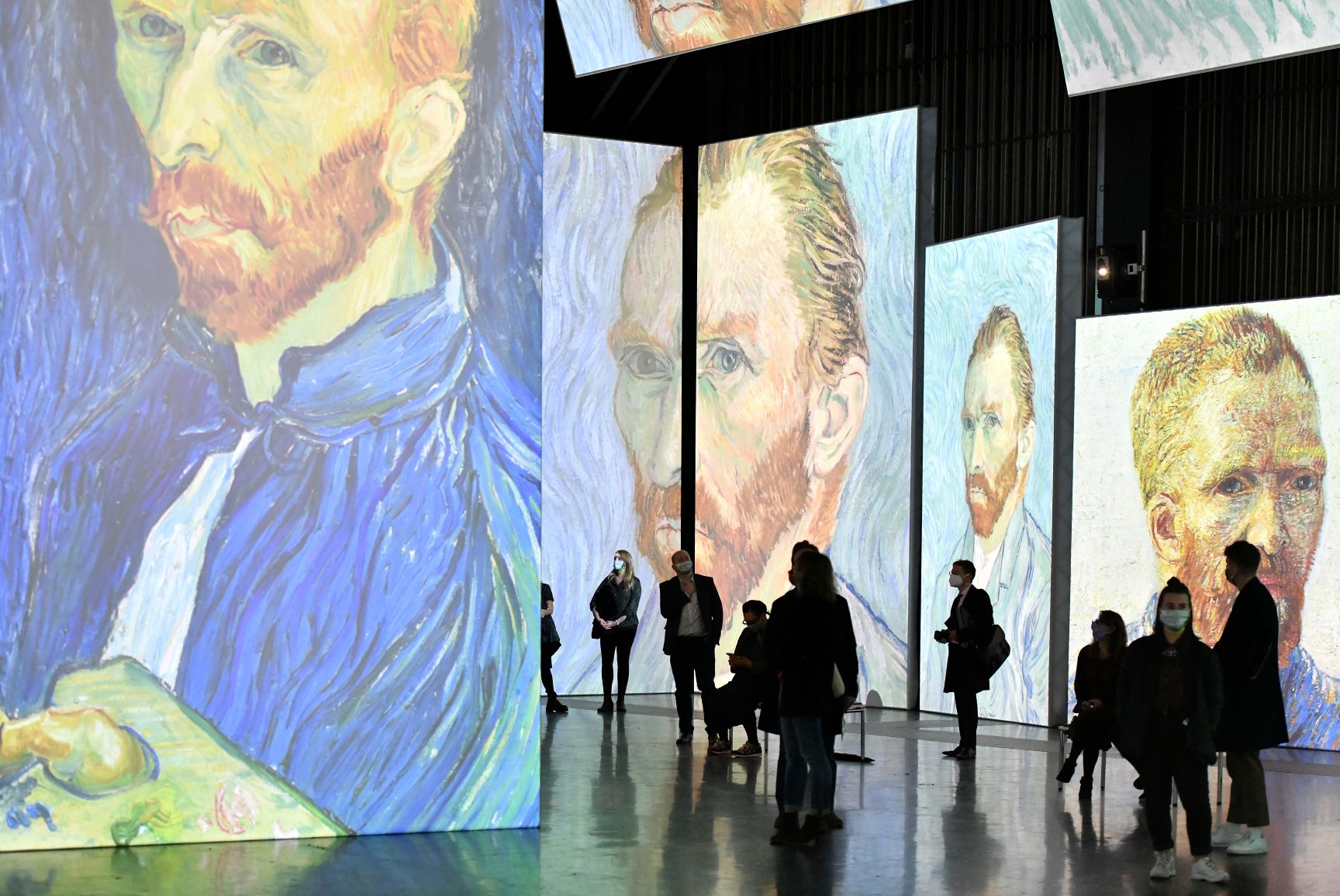
Culture writer Lucy Perrior reviews Van Gogh Alive at the Birmingham Hippodrome, praising this new digital format for displaying artwork as offering a deeper and more immersive experience
Van Gogh Alive at the Birmingham Hippodrome brings Vincent Van Gogh’s life experience to the forefront as a fundamental way to understand and explore his paintings. Van Gogh’s artworks are presented alongside quotes taken from his personal letters and accompanied by a classical score that heightens the immersive experience of this exhibition. For me, one of the most striking quotes highlighted in this exhibition was Van Gogh’s belief that ‘paintings have a life of their own that derives from the painter’s soul’. This quote encapsulates the experience of Van Gogh Alive because instead of displaying paintings to be viewed by passive spectators, the paintings in this exhibition are brought to life, and you get to actually live within the world of art created by Van Gogh.
The immersive exhibition begins with an overview of the locations where Van Gogh lived during his life, and biographical summaries of these moments are projected onto the screens that fill the darkened room. These screens look like canvases but, instead of being covered in paint, they are each filled with projections of photographs, videos, and paintings. The first sequence displays a selection of Van Gogh’s self-portraits moving in quick succession and accompanied by music from Antonio Vivaldi’s ‘Four Seasons’. This initial movement is a concise way of depicting how Van Gogh’s style developed over time in one mode of artistic representation. Beginning with this sequence provides a striking overview of Van Gogh’s stylistic development, meanwhile, the accompanying music accentuates the varying ups and downs of Van Gogh’s emotional state throughout his life. This self-portrait sequence is repeated at the end of the experience to provide a sense of circularity to the exhibition and reinforce the significant stylistic development of Van Gogh’s paintings. This structure is especially beneficial to those who are not very familiar with Van Gogh’s work, as it gives an insight into his artistic development and emotional journey.
“The multisensory experience of the exhibition at this point makes you feel like you could actually be strolling the Parisian streets of the late nineteenth century
By using modern digital technology, this exhibition innovatively showcases artworks that are extremely well-known. Surrounding the room with canvases and projecting videoes and images, the exhibition creates a powerful sense of performance. You feel as though you are participating in the art rather than merely viewing it, and from this point of view, the Hippodrome is the perfect location for this exhibition. Since it is a theatre that cannot currently put on plays in the traditional format consisting of a stage and an audience, this experience allows the Hippodrome to extend the theatrical space to allow the spectators of art to also be participants within the exhibition.
“The exhibition showcases the continuing relevance of art within the modern digital age and highlights how technology and art can complement each other
As a post-impressionist, Van Gogh’s paintings are created with thick layers of paint applied to the canvas. I expected the presentation of this technical style to be diminished in a projected digital format, but on the contrary, I think that it enhanced my appreciation of the detail. Some projections focus on certain sections of the paintings so that a few brushstrokes take up one vast canvas, then, on the further side of the room, you can see the entire painting projected on another of these canvases. Thereby, this presentation provides the different perspectives that you would be able to experience in a traditional gallery. Far from losing the technical detail of paintings in this digital format, I think it really encourages spectators to appreciate the exploration of paintings from varied perspectives.
As well as appreciating his artistic technique, the exhibition also encourages you to explore Van Gogh’s artistic perspective. By projecting photographs before the corresponding Van Gogh paintings, you can appreciate how his artistic eye interpreted the world around him. As an example, ‘Sunflowers’ – one of Van Gogh’s most famous works – is displayed by firstly covering the room with a video of real sunflowers, and then sequentially changing these videos to projections of Van Gogh’s painting. Displaying the art in this way highlights Van Gogh’s unique use of colour, especially in this work that distinctly departs from a realist recreation of the sunflower to create a painting with shades of yellow. By presenting art in this way, the exhibition highlights the unique visual perspective that Van Gogh brought to his paintings.

Van Gogh Alive truly accentuates the importance of exploring a holistic view of Van Gogh’s life through his creative output. Van Gogh’s evolving artworks are presented alongside quotes from his letters and accompanied by a dramatic classical score to emphasise the changing emotional states that he experienced throughout his life. I think that this exhibition truly succeeds in involving you as a participant in Van Gogh’s art. Rather than being a passive spectator of art, you are immersed in the world of his creations. If there is any time that one might wish to be transported into a world of emotional and beautiful art, I think that time is now.
I would highly encourage you to visit this exhibition at the Birmingham Hippodrome, which lasts until 31st December 2020. https://vangoghaliveuk.com/ticket-information/
After the exhibition, you can get photos of yourself taken in a recreation of ‘Bedroom in Arles’, have a go at recreating this painting yourself, and take photos in a room full of faux sunflowers. The experience is very well adapted for COVID-19 precautions as social distancing is easy in the vast exhibition space; face coverings must be worn, and the interactive rooms allow only one party of people in at a time.
Read more Reviews from Redbrick Culture:

Comments